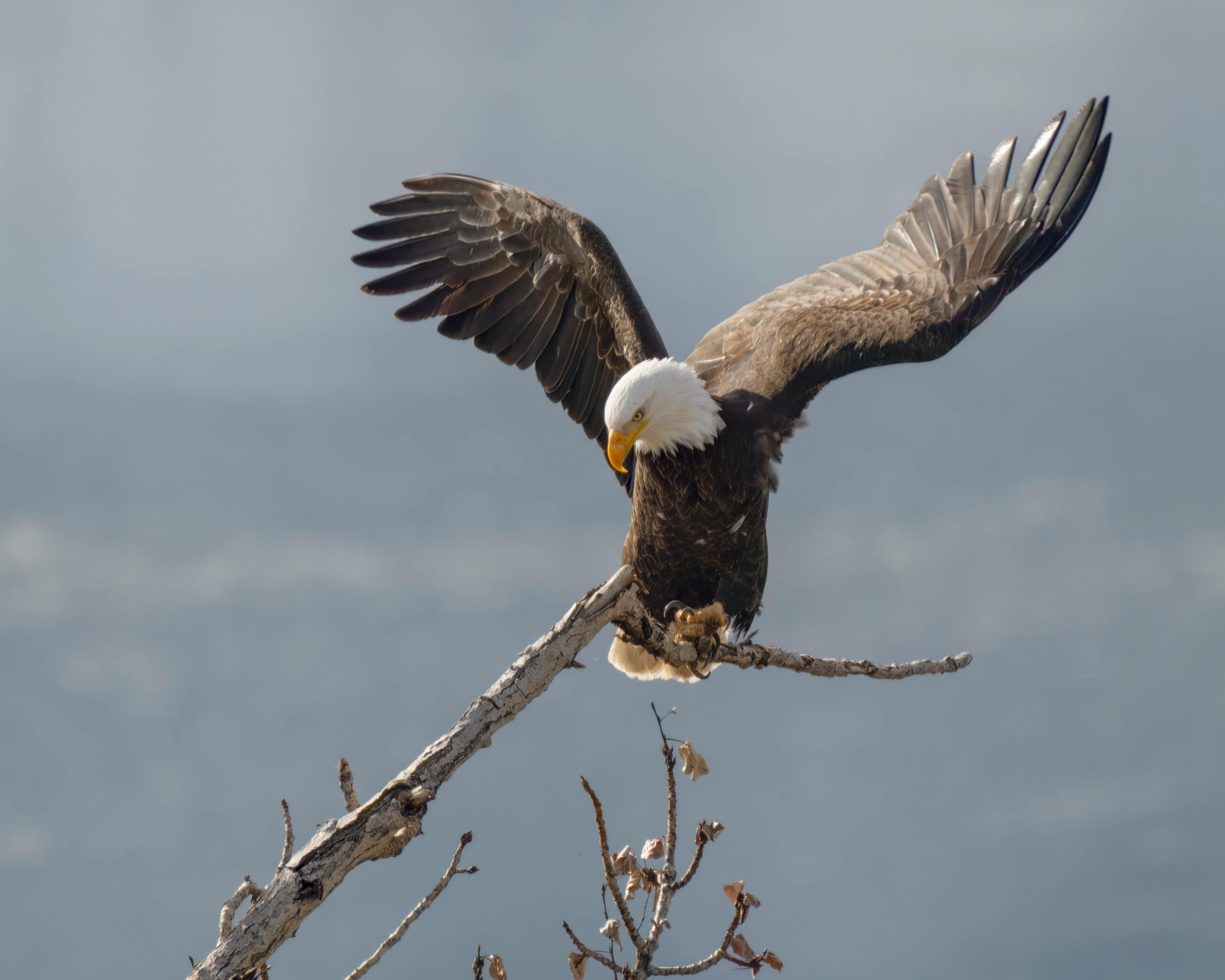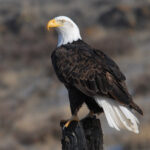Bald eagles, the national symbol of the United States, are known for their striking appearance and majestic flight. However, their diet and feeding habits during the winter months are not as well-known. In this blog post, we will delve into the specifics of what bald eagles eat in winter, with a focus on advanced details, facts, figures, and data points.
The Varied Diet of Bald Eagles in Winter
Bald eagles are opportunistic feeders, meaning they will eat whatever is most available and requires the least amount of energy to acquire. While fish make up about 70 to 90 percent of their diet, they will also consume small mammals, birds, and carrion. In winter, their diet becomes even more varied as food sources become scarce.
One study found that bald eagles in the Upper Midwest consume a wide range of prey in the winter months, including fish, waterfowl, small mammals, and carrion. In fact, the study found that eagles will consume just about anything they can find, including roadkill and animals trapped in the ice. This is likely due to the fact that many of their usual food sources, such as fish and waterfowl, become less abundant in the winter months.
Scavenging for Deer Carcasses
 Image source: Pexels by Frank Cone
Image source: Pexels by Frank Cone
Another study found that bald eagles in the northern Great Plains consume a significant amount of deer carcasses in the winter months, with one eagle consuming an average of 1.5 deer carcasses per week. This is likely due to the fact that deer are one of the few large mammals that are still active during the winter months, making them a reliable source of food for eagles.
Landfills and Dump Sites as Food Sources
Bald eagles are also known to scavenge at landfills and dump sites during the winter months, where they can find a reliable source of food in the form of discarded meat and carrion. In fact, one study found that bald eagles in the Upper Midwest spent the majority of their time at landfills during the winter months, resting and waiting for food to become available.
Specific Food Items Consumed by Bald Eagles in Winter
In terms of specific food items, one study found that bald eagles in the Upper Midwest consumed a wide range of prey in the winter months, including:
| Food Item | Examples |
|---|---|
| Fish | Northern pike, walleye, yellow perch, carp |
| Waterfowl | Mallards, common mergansers, Canada geese |
| Small Mammals | Muskrats, red squirrels, snowshoe hares |
| Carrion | White-tailed deer, raccoons, opossums |
In addition to these food sources, bald eagles are also known to consume other birds, such as gulls and crows, as well as reptiles and amphibians.
Adaptations for Surviving Winter Conditions
Bald eagles are well-adapted to surviving in cold winter conditions, with a high metabolic rate that allows them to maintain their body temperature even in freezing temperatures. However, finding enough food to sustain themselves can be a challenge, especially in areas where food is scarce.
In terms of specific data points, one study found that bald eagles in the Upper Midwest consumed an average of 1.5 deer carcasses per week during the winter months, with each carcass providing an average of 30-40 pounds of meat. Another study found that eagles in the northern Great Plains consumed an average of 0.5-1.0 pounds of food per day during the winter months, with fish making up the majority of their diet.
Overall, bald eagles are highly adaptable and resourceful when it comes to finding food in the winter months. Their varied diet and ability to scavenge for a wide range of prey allow them to thrive even in the harshest of winter conditions.
References:
- Elliott, K.H., et al. “Bald Eagle (Haliaeetus leucocephalus) Winter Ecology in the Upper Midwest.” Journal of Raptor Research, vol. 40, no. 3, 2006, pp. 215-224.
- Katzner, T.E., et al. “Bald Eagle (Haliaeetus leucocephalus).” The Birds of North America, no. 683, 2007, pp. 1-42.
- American Eagle Foundation. “Bald Eagle Diet.” Accessed on February 15, 2023. https://eagles.org/what-we-do/educate/learn-about-eagles/bald-eagle-diet/
- Journey North. “The Challenge of Finding Food in Winter.” Accessed on February 15, 2023. https://journeynorth.org/tm/eagle/FoodFrozen.html
- CBS News. “Why do bald eagles choose winter as the time to start a family?” Accessed on February 15, 2023. https://www.cbsnews.com/minnesota/news/why-do-bald-eagles-choose-winter-as-the-time-to-start-a-family/



